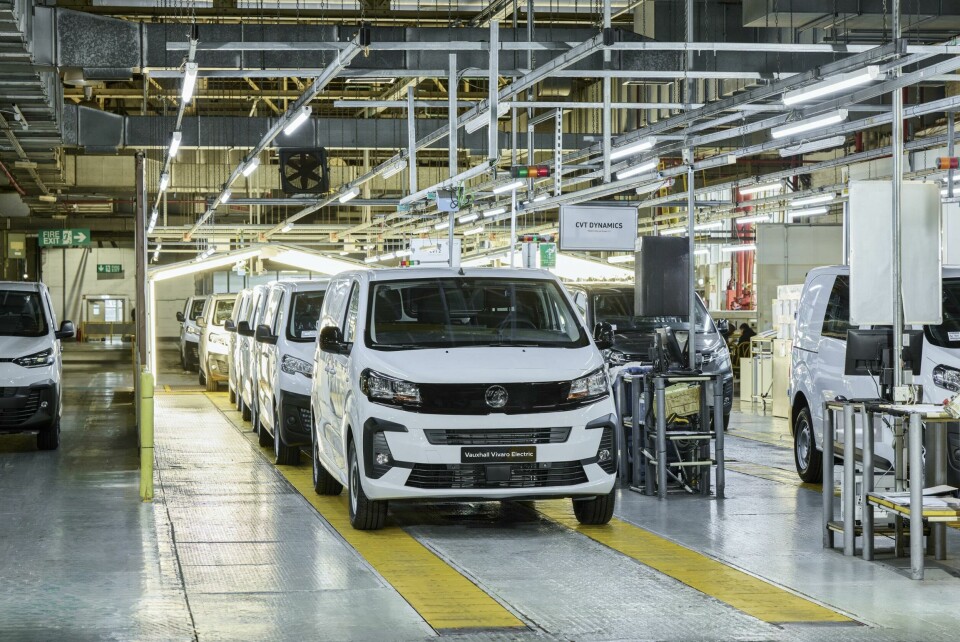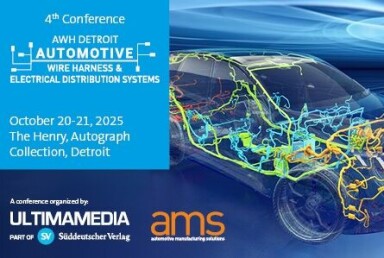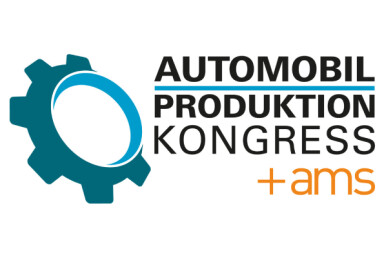UK auto production prospects improving
Economic headwinds, supply chain challenges and future trading uncertainty have put the UK’s automotive manufacturing sector under considerable pressure, but there are signs of a positive change ahead.

In 2016, UK production of cars and vans was just over 1.7m units; a few years earlier there had been talk of UK production topping 2m a year. Then came the Brexit vote, Honda closing its factory in Swindon and the end of car production by Vauxhall. Jaguar’s line-up has also reduced and neither Nissan nor Toyota now fully use their capacity. Global economic uncertainty has not helped and in recent years production has fallen, with the situation worsened by the chip crisis and the COVID pandemic. With all these headwinds, rising interest rates and falling consumer confidence, it is not surprising that UK light vehicle production fell below the 1m mark in 2020 to 972,000, to 917,000 in 2021 and to 854,000 in 2022.
However, 2023 saw a strong uplift in production and several major production investment announcements. Production topped 1m units in 2023 but will almost certainly drop back below this symbolic level in 2024 following the recent end of production of the electric Mini and Nissan Leaf and the mid-year end of car production at Jaguar. However, from 2025 a series of new models from Nissan, Jaguar, Land Rover and Mini will come on stream and the UK has the potential to return back above 1m units a year on a consistent basis through the 2020s. The timing for some of the new models remains to be confirmed and given the industry’s struggles across Europe with launching EVs and convincing consumers to switch to EVs, the UK VMs may not get back above 1m units annually until later in the decade.
Big investments offer a positive outlook
Although producing 1m units again will be seized upon by government and others as a sign of the health of the industry, what is more significant is the series of long-term investment commitments made for the UK in the last year or so. The biggest investment comes from JLR which announced a total of £15bn in its Reimagine programme which will see Halewood become a fully electric factory, producing at least two and potentially four new models on the EMA platform; a reconfigured Solihull will have at least two assembly lines, with one producing the Range Rover and Range Rover Sport on the MLA platform, and a second producing three all-new Jaguars starting in late 2025. The Castle Bromwich factory will shortly stop production of cars but will become a major pressings and stampings centre for Halewood and Solihull, while the Wolverhampton engine factory will transition to making electric motors and assembling batteries; the cells for these batteries will come from a new factory announced by Tata itself to be built in Somerset. This adds a further £4 billion of investment to the UK and should give a major boost to the country’s growing EV and battery supply chain.
“It is not yet known where the new electric Minis will source their batteries but there have been some suggestions that a Chinese battery supplier to BMW, EWE, could open a cell factory in Coventry”
Meanwhile, in late 2023 Nissan – having started with a £1billion investment for replacing the Leaf and in the process of increasing battery production for the new model in Sunderland – has announced a further £2 billion investment. This will raise battery production again, in association with Envision, and add two more EVs, the replacement for the Juke and an electric Qashqai which will be made alongside the current hybrid ePower model. Nissan-Envision will have c38GWh battery capacity, comparable to the 40GWh planned for Tata.
Mini’s future was confirmed in August last year when BMW confirmed £600m would be invested in Oxford to produce two new EVs from 2026, to be made alongside the current petrol powered Mini; these EVs will be preceded by Chinese imports but this was always likely to have been an interim measure as permanently sourcing all electric Minis from China for the UK, Europe and US would have been extremely risky in view of the likely additional tariffs to be levied on Chinese EVs. It is not yet known where the new electric Minis will source their batteries but there have been some suggestions that a Chinese battery supplier to BMW, EWE, could open a cell factory in Coventry.

Stellantis has converted its Ellesmere Port factory to make small electric vans, although the currently planned volumes, less than 30,000 in 2024, are well below capacity; Stellantis’ other UK van plant in Luton is running at close to full capacity, c100,000 pa, and its future has seemingly been secured with Stellantis confirming the plant will make electric versions of the Vivaro medium van from mid-2025; diesel vans will continue to be made there as well through the rest of the 2020s and probably into the 2030s.
Despite all the positive news outlined above, there are some uncertainties and disappointments elsewhere in the UK. Toyota has yet to confirm plans for its electric models in Europe, let alone the UK, although it’s highly likely that EVs will be added in due course; Bentley has, by contrast, delayed its full electrification programme which was due to be complete by 2030, but it will now continue to make hybrids through to the 2030s, notably plug-in variants as consumers resist a quick transition to EVs. Aston Martin has delayed its first EVs by a couple of years, while Lotus, with the financial backing of Geely, is accelerating its all-electric future although most of the future Lotus production will come from China rather than the UK.
Maintaining the current trading environment
It is difficult to see UK automotive production getting back to the 1.7m units made back in 2016 but having seen production more or less halve by 2023, the general trend is now positive. Big investments from JLR/Tata, Nissan and Mini (by BMW) will drive production growth and the switch to EVs. Production of 1.1-1.2m units a year is a realistic prospect for the late 2020s; and given the depressed state of the industry and sentiment amongst its leaders in the aftermath of the Brexit vote, this is quite a turnaround. There were fears of significant dis-investment in the aftermath of the Brexit vote, but Honda apart there has not been a mass exodus from the UK and the major VMs here are definitely committed to the UK; nearly £20 billion from JLR-Tata and over £3 billion from Nissan-Envision are significant sums and signals that UK remains a viable manufacturing location – so long as UK made vehicles meet the local content requirements of the UK-EU trade deal tariff and quota free exports will continue; 80% of UK production is typically exported each year, with more close to 2/3 of that 80% sent to the EU, so maintaining the current trading environment will be essential for the benefits of the recently announced investments to be realised.


